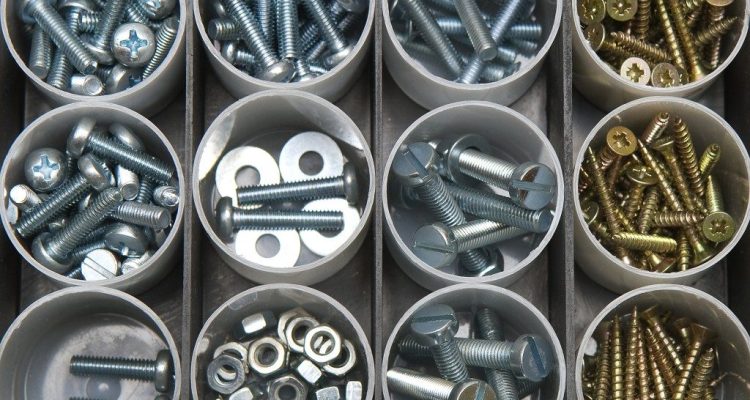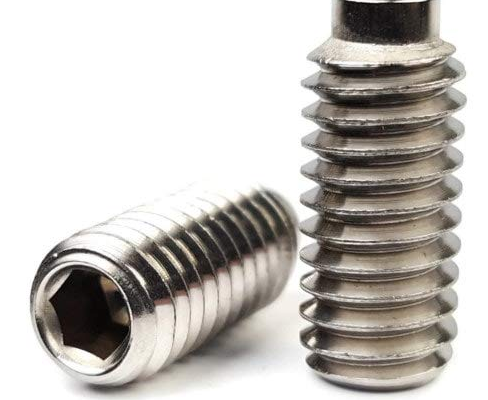
How do you identify bolt grades
To identify bolt grades, check the markings on the bolt head. For example, an 8.8 metric bolt has a tensile strength of 800 MPa and a yield strength of 640 MPa. SAE bolts use radial lines, with Grade 8 having six lines and a tensile strength of 150,000 psi.
For Metric Bolts ISO Standards
When identifying metric bolts using ISO standards, one of the key ways this is done is by understanding the numbers stamped on the bolt head. A Grade 8.8 bolt has a tensile strength of 800 MPa, while a Grade 10.9 bolt offers 1,000 MPa. In an industrial setting, for example, equipment intended to support high stresses would require a 10.9 bolt, while in light usage applications, like holding small machine parts in place, a Grade 8.8 bolt would suffice.
An 8.8 grade bolt is thus 640 MPa, or 80% of its tensile strength, and it will deform permanently under stresses greater than that. A 12.9 grade bolt has a yield strength of 1,080 MPa and is, therefore, much stronger for such applications as high-performance automotive engines or structural steel beams. Construction of a bridge would involve Grade 12.9 bolts due to the high load-bearing effect that it would be under, and an inferior grade would surely fail in such scenarios.
Whereas the Grade 8.8 bolt may sell for $0.50 apiece, a Grade 10.9 bolt of the same size would cost $0.75 apiece, and a Grade 12.9 bolt could reach upwards to $1.00 per unit or more. In big construction projects, that is a lot of difference. Upgrading to Grade 10.9 over Grade 8.8 on a project with 10,000 bolts would increase material costs by around $2,500.
The size of the bolt is going to play a significant role in both performance and cost. A M12, 12mm diameter, Grade 8.8 bolt has a maximum load of about 31.4 kN whereas a Grade 10.9 bolt can have a value as high as 39.2 kN. This makes the Grade 10.9 bolt about 25% stronger—a critical difference in applications like securing heavy machinery or supporting steel structures. If the diameter increases to M16 (16mm diameter), the maximum load for a Grade 8.8 bolt jumps to 72.3 kN, while that of a Grade 10.9 bolt rises to 90.3 kN.
Besides strength and cost, other factors that would come into play while selecting grades of bolts are durability and life. A Grade 8.8 bolt might last 10-15 years under moderate stress and normal environmental conditions; a Grade 12.9 bolt can last 20 years or more, even in more extreme conditions such as exposure to heavy vibration or harsh chemicals. In offshore drilling platforms, where the bolts are subjected to saltwater corrosion and high pressure, the longer life span of a Grade 12.9 bolt justifies the higher cost. The more expensive durable bolts will be the better investment for performance over the long run since frequent replacement of bolts increases maintenance costs in such environments.

For SAE Bolts
Immediately, the SAE bolts can easily be recognized by the radial lines in the head of the bolt. The bolts are graded in class form with the class describing the tensile strength of the bolt. Example: A Grade 2 bolt has no marking and will have a general tensile strength of 60,000 psi. Other higher grades include Grade 5, which has three radial lines and a tensile strength of 120,000 psi, about double the tensile strength of a Grade 2 bolt.
A Grade 2 bolt has a yield strength of 57,000 psi, whereas a Grade 8 bolt, marked by six radial lines, boasts a far higher yield strength of 130,000 psi. This actually translates to Grade 8 bolts being around 2.3 times as powerful as Grade 2 bolts concerning loads before permanent deformation.
Another important distinguishing feature would be the cost difference between the SAE grades of bolts. Grade 2 bolts, the cheapest, run from approximately $0.10 to $0.20 per bolt, depending on size. Grade 5 bolts, stronger than Grade 2, may cost approximately $0.30 to $0.50 per bolt. Grade 8 bolts of higher strength and, therefore requiring a better class of material, will run approximately $0.75 to $1.00 per bolt. Using Grade 8 bolts instead of Grade 2 on a project involving 1,000 bolts may add about $650 to the cost of the project.
With a diameter of 1/2 inch, Grade 5 bolt tensile strength is about 17,000 pounds, thus giving a medium-strength application, such as holding parts of an engine together or mid-sized construction beams. However, a 1/2-inch diameter Grade 8 bolt has a tensile strength of approximately 20,000 pounds and thus incurs about 15-20 % increase in the strength compared to the Grade 5 bolt. In the case of a 3/4 inch larger diameter for Grade 5, this bolt will have about 39,000 pounds. The Grade 8 at the same diameter, however, will provide 46,000 pounds.
In conditions where Grade 2 bolts suffice for light-duty purposes, they become relatively short-lived, usually lasting about 5 to 7 years under average conditions. Equipped with increased strength, the Grade 5 bolts are capable of maintaining integrity for as long as 10 to 15 years under modest conditions. Grade 8 bolts, in their turn designed to resist heavy levels of stress and strong vibrations—the operational life span could easily be extended beyond 20 years even in the harshest conditions, apart from heavy machinery and off-highway vehicles.

For ASTM (American Society for Testing and Materials) Bolts
ASTM bolts are categorized, according to certain standards, into groups of material composition and performance characteristics. The ASTM A307 bolt, which is made from low carbon steel with a general tensile strength of 60,000 psi. With ASTM A325 bolts, mainly applied in structural steel connections, the tensile strength is as high as 120,000 psi, hence approximately twice as strong as the A307 variety for heavy applications like steel bridges and skyscrapers.
The yield strength for different grades of ASTM bolts also vary, an A325 bolt would have a yield strength of 92,000 psi, meaning it would support that much stress before it actually starts to distort. An ASTM A490 bolt, generally used in heavy structural steel applications, would boast as high as 130,000 psi in yield strength and is thus ideal for projects entailing high structural integrity, such as high-rise buildings or critical infrastructure. This difference in strength between an A325 and A490 bolt becomes really important in those critical environments which need safety and durability, as the A490 bolts provide around 40% more strength compared to A325.
An ASTM A307 bolt would cost in the neighborhood of $0.50 to $0.70 each, whereas the ASTM A325 bolt costs around $1.00 to $1.50 because of the stronger material used in making it. This more than doubles the cost when compared to the A307 bolt. Correspondingly, a stronger anchor—ASTM A490—sells for $2.00 to $3.00 per bolt. 1,000 A490 bolts instead of A307 would increase the cost by about $2,000, an amount large enough to require strong justification based on greater strength needed for the application.
The maximum load that can be supported by a 1/2-inch diameter A307 bolt is about 15,000 pounds, considered light-duty construction. The capacity of a 1/2-inch diameter A325 bolt increases to 22,000 pounds—a load-carrying capacity increase of about 47%. An A490 bolt with the same size amplifies it even more—to 28,000 pounds—and thus is a far better choice for structural applications under heavy tension, such as heavy steel beams in industrial buildings or even bridges. If a 3/4-inch diameter bolt is used, then the A325 bolt can bear up to 39,000 pounds, while the A490 bears 50,000 pounds and hence becomes indispensable in works that demand high safety and capacity of load-bearing.
Finally, durability becomes one of the basic concerns while choosing ASTM bolts. A307 bolts do just fine for lighter applications, although they are known to last for around 10 to 15 years under normal conditions. While A325 and A490 bolts can withstand extremely harsh weather or operational conditions, it could be extended for as many as 30 years or more in the structural steel used to build up a bridge or skyscraper because of its additional strength and corrosion resistance.



